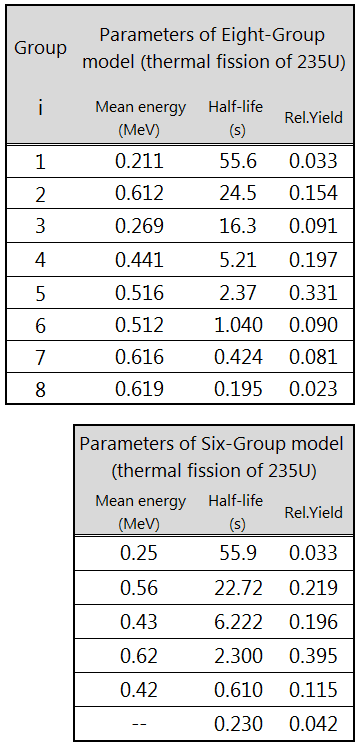Eight Groups of Delayed Neutrons – Parameters
Th six-group model may be insufficient, especially in the case of epithermal reactors, because virtually all delayed neutron activity measurements have been performed for fast or thermal-neutron-induced fission. In the case of fast reactors, the nuclear fission of six fissionable isotopes of uranium and plutonium is important. The accuracy and energy resolution may play an important role.
To reduce discrepancies between measured and calculated values of the reactivity scale based on reactor kinetics (this discrepancy results in excessive conservatism in the design because uncertainties must cover it during core design and safety analyses calculations), the NEA (Nuclear Energy Agency) and its NEANSC/WPEC Subgroup 6 recommends a new eight-group representation. It seems reasonable to increase the number of delayed neutron groups because many studies have shown that most delayed neutrons are produced approximately by twelve precursors common to all fissioning isotopes.
The eight-group representation uses a set of eight-group half-lives for all fissioning systems, with the half-lives adopted for the three longest-lived groups corresponding to the three dominant long-lived precursors: 87Br, 137I, and 88Br (these precursors was separated into single groups).
See also: Delayed Neutron Data for the Major Actinidies, NEA/WPEC–6. OECD 2002.
